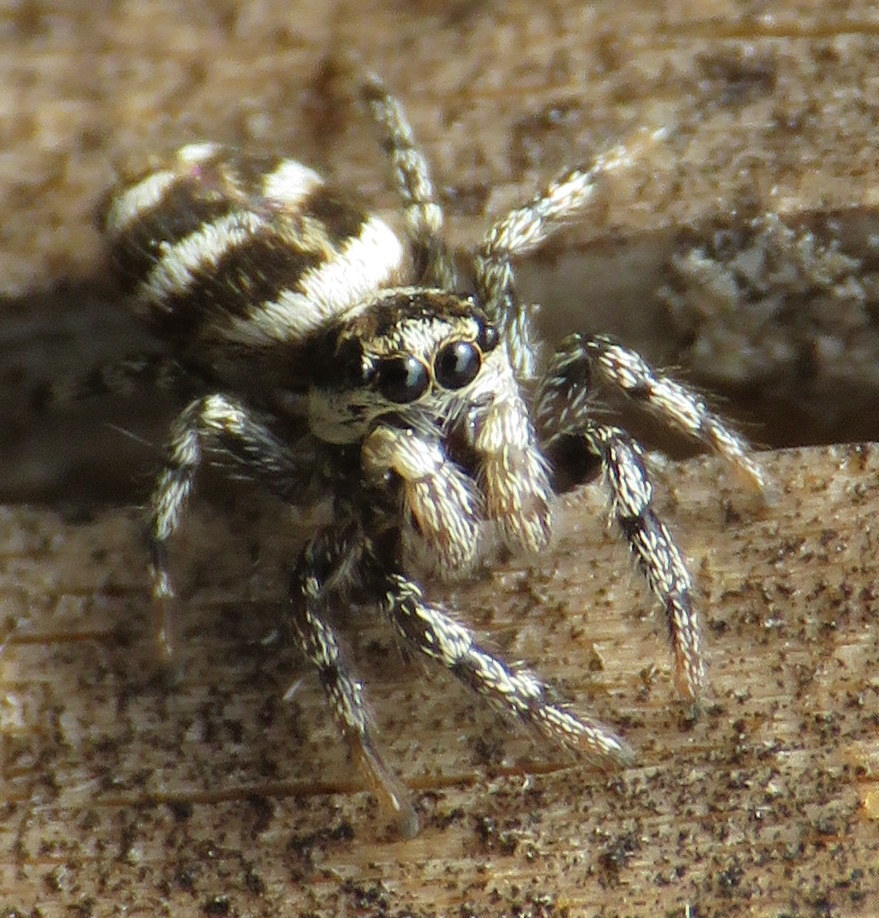Life on a Spruce Stump
During a windstorm in 2013, an old spruce tree fell down in our yard. Luckily it didn't hit a pedestrian, fall toward the house, or smash a car on the street. It cost a bit to remove, but at least it didn't hurt anyone or anything.
We decided to take out another old spruce at the same time, leaving an eight-foot stump for whatever wildlife might find it useful. I didn't notice much in the first few years, but in the spring of 2018 the stump suddenly became the most active place in my yard, at least as far as insects are concerned. And it still is.
The first to show up was a mason bee (Osmia) on April 22, 2016. A few days later, I drilled a some holes in the stump, hoping that some bees would use them as nests. And by April 26, some of the holes were already being used by bees.
Nesting Bees
Western Blue Orchard Bee (Osmia lignaria ssp. propinqua)
The first to arrive and the most common spring bees. They are prolific pollinators of our apple and cherry trees.
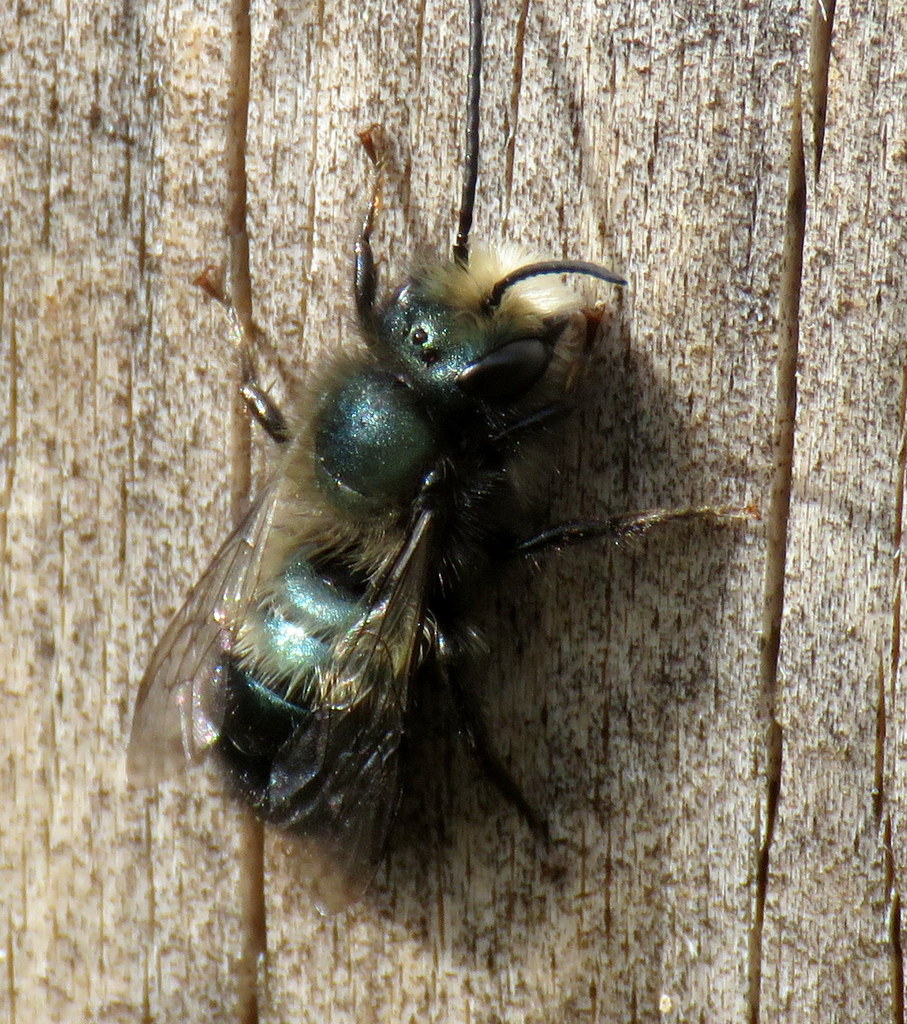 male |
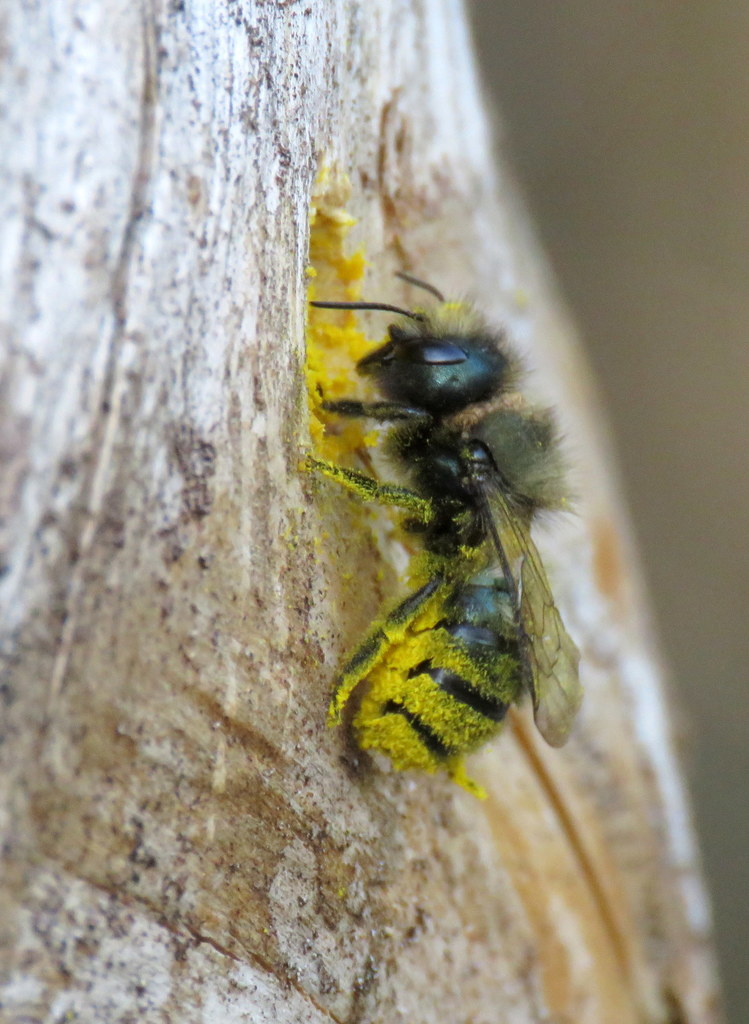 female |
Pugnacious Leaf-cutter Bee (Megachile pugnata)
Each nest cell partition requires more than 30 trips - 15 for leaf masticate, 15 for soil, and a few for oval pieces to complete a single cell. And up to 40 trips to collect pollen. (Frohlich and Parker, 1983)
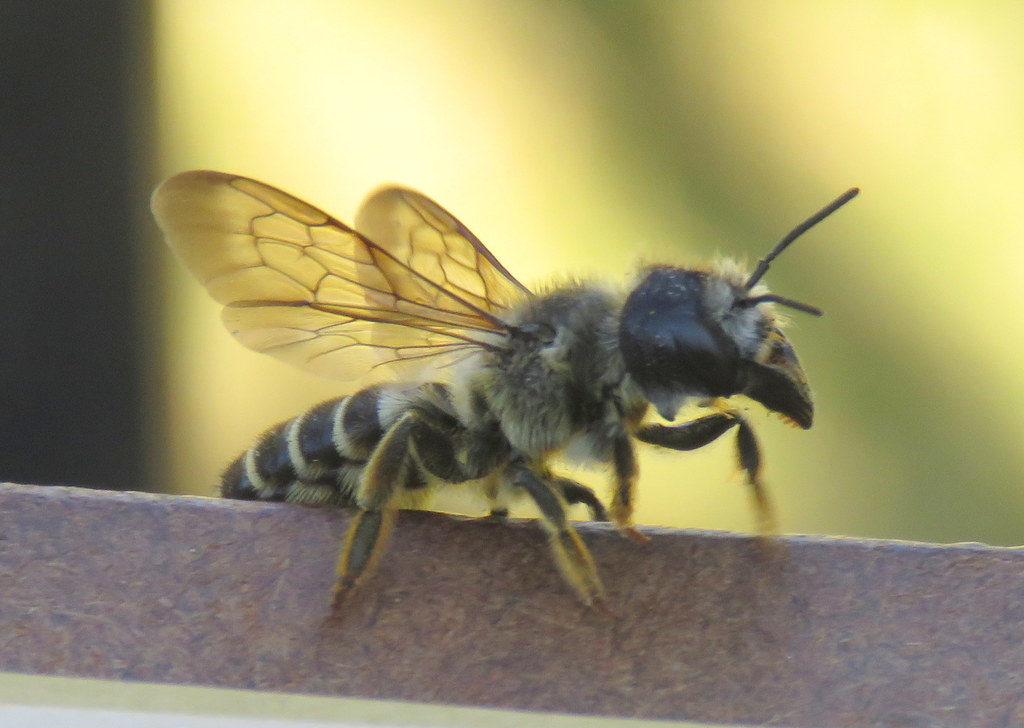
Caught leaving drilled hole in spruce stump. Length 17 mm
Nest building behavior of Pugnacious Leaf-cutter bee
Los Angeles Resin Bee (Megachile angelarum)
Collects and uses resin for nest partitions instead of leaves. They can be identified by the grooves on their 2nd to 4th tergal segments of the metasoma.
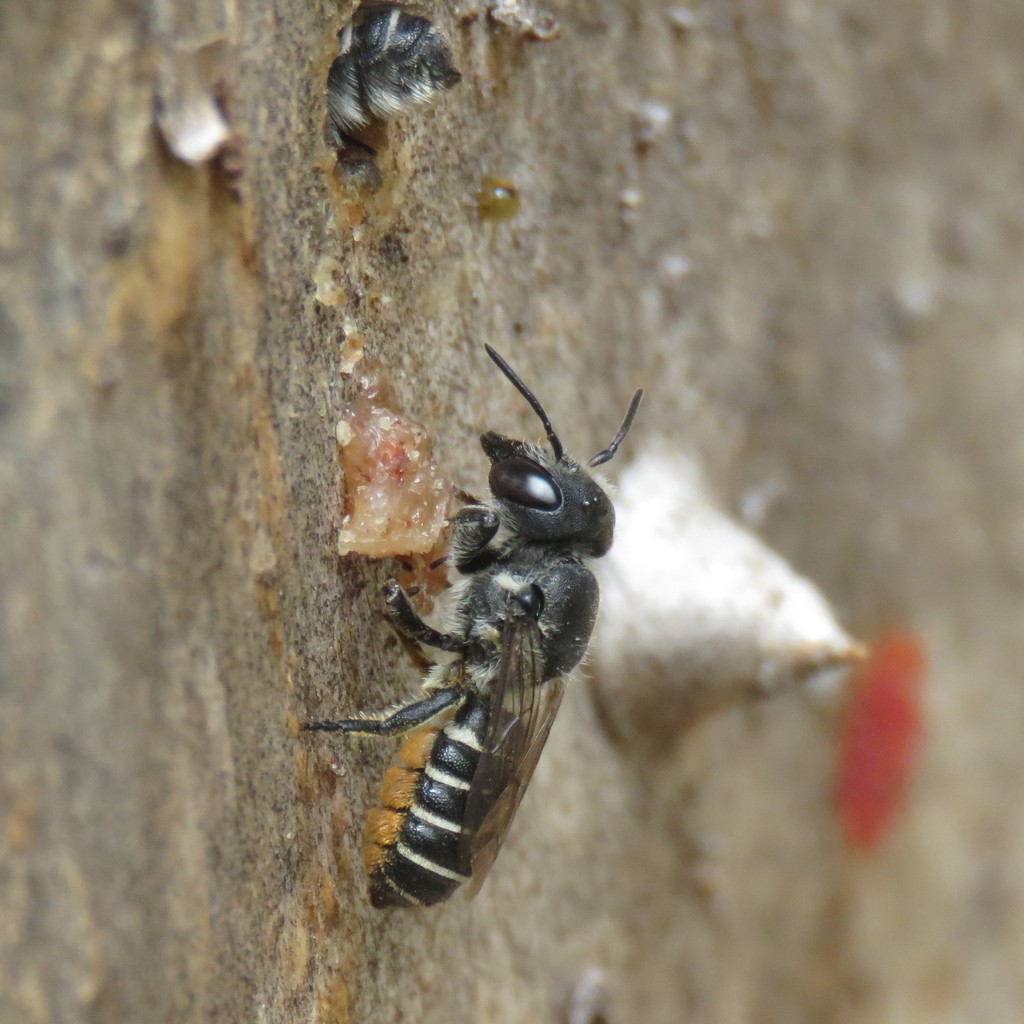
Megachile angelarum: a bee in a pea
White-fronted Small-Mason Hoplitis albifrons
A black leaf-cutter bee with long white hairs.
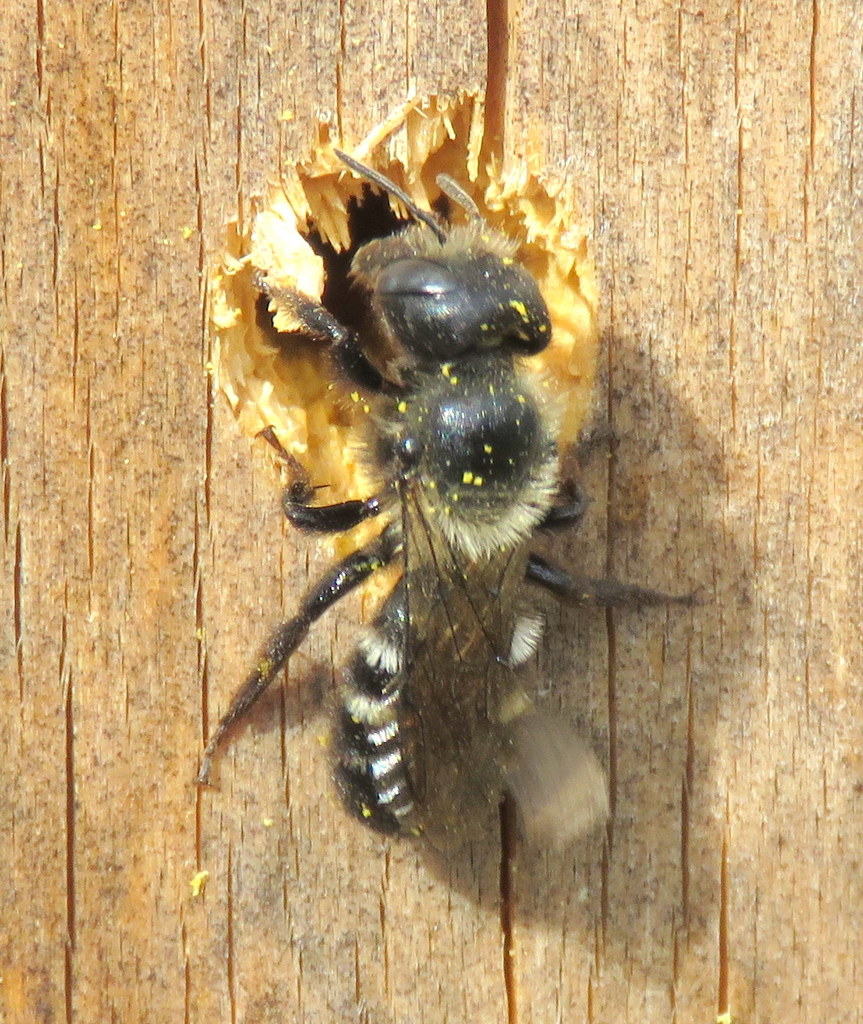
Black-and-gray Leafcutter Bee (Megachile melanophaea)
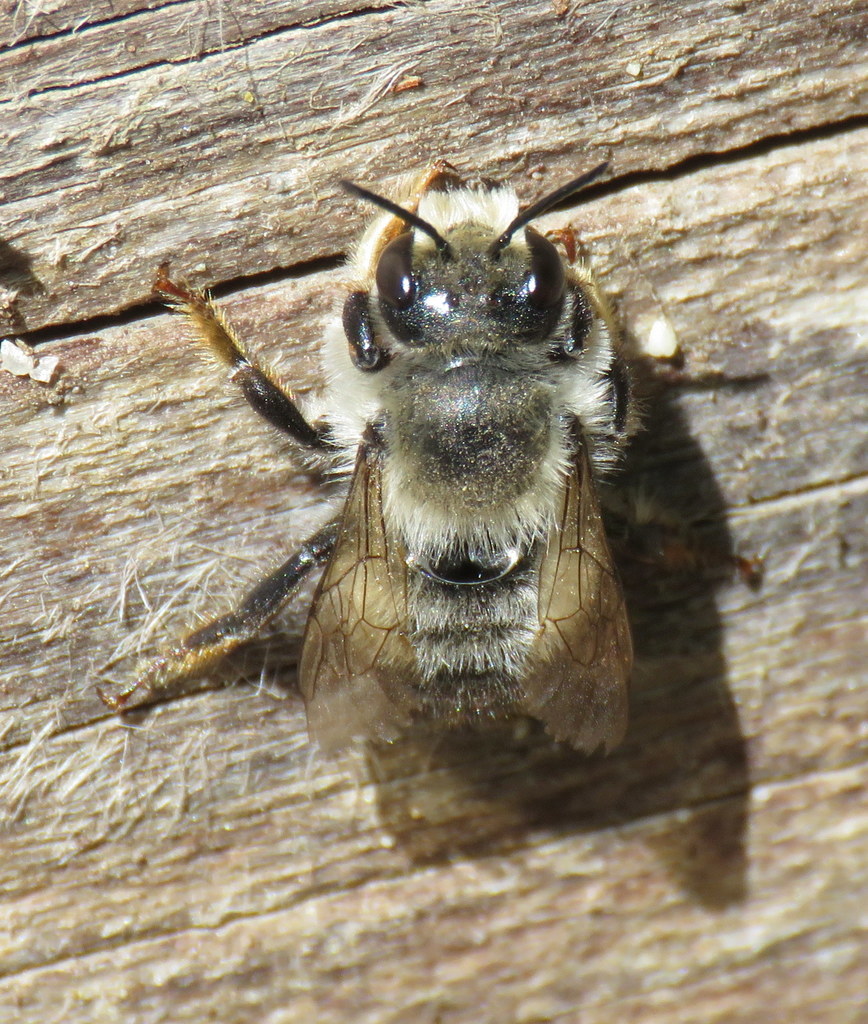 |
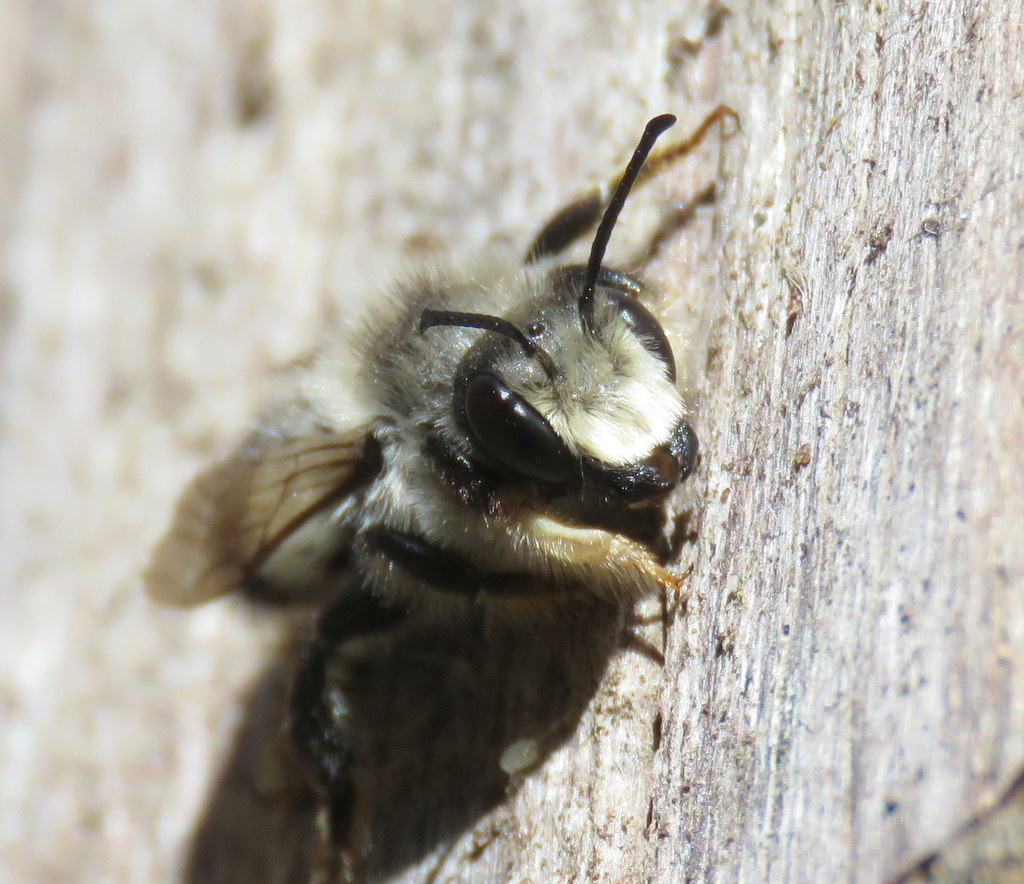 |
Nesting Wasps
Potter and Mason Wasps (Subfamily Eumeninae)
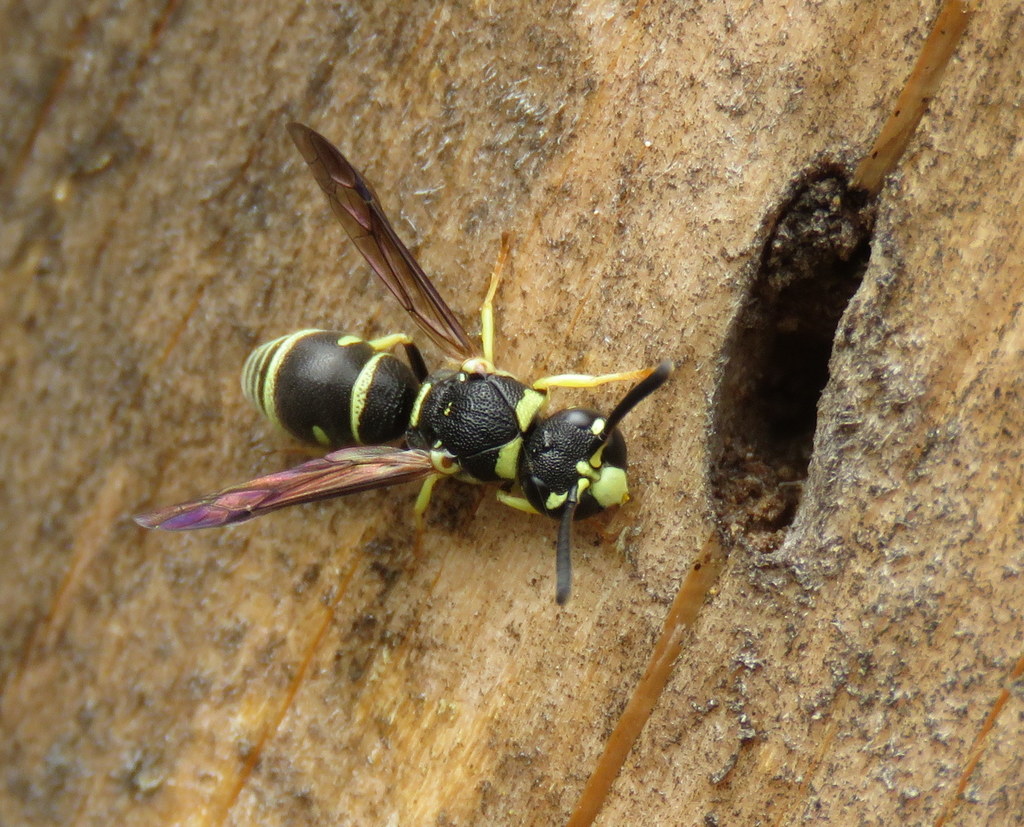 |
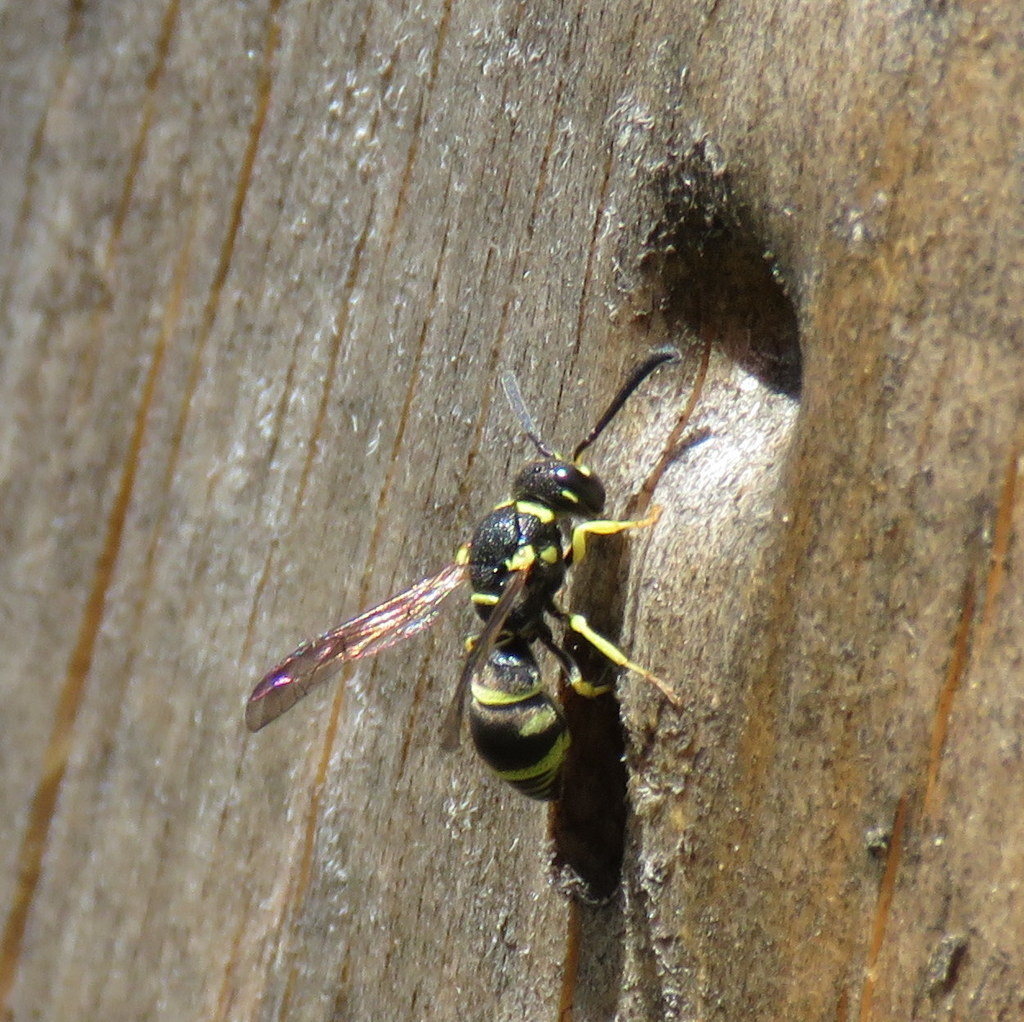 |
Cavity nesters. Hang a single egg from a thread. Use caterpillars (sometimes beetle larvae)
Genus Lestica
L. producticollis or confluenta (hard to separate from photos alone)
Prey: adult moths
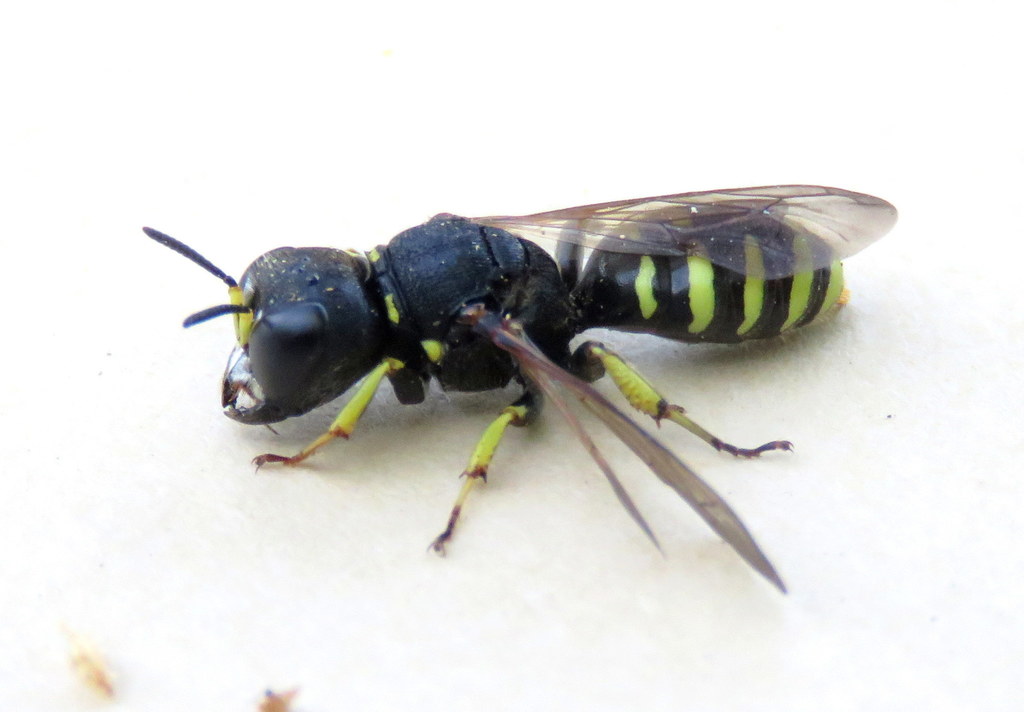
Elegant Grass-carrying Wasp (Isodontia elegans)
There's been as many as six nests on the stump at one time.
These wasps use coiled grass as cell dividers and temporarily plug nest hole with grass while they're out hunting.
Prey: tree crickets. 4 to 11 per cell. (Females get more than males)
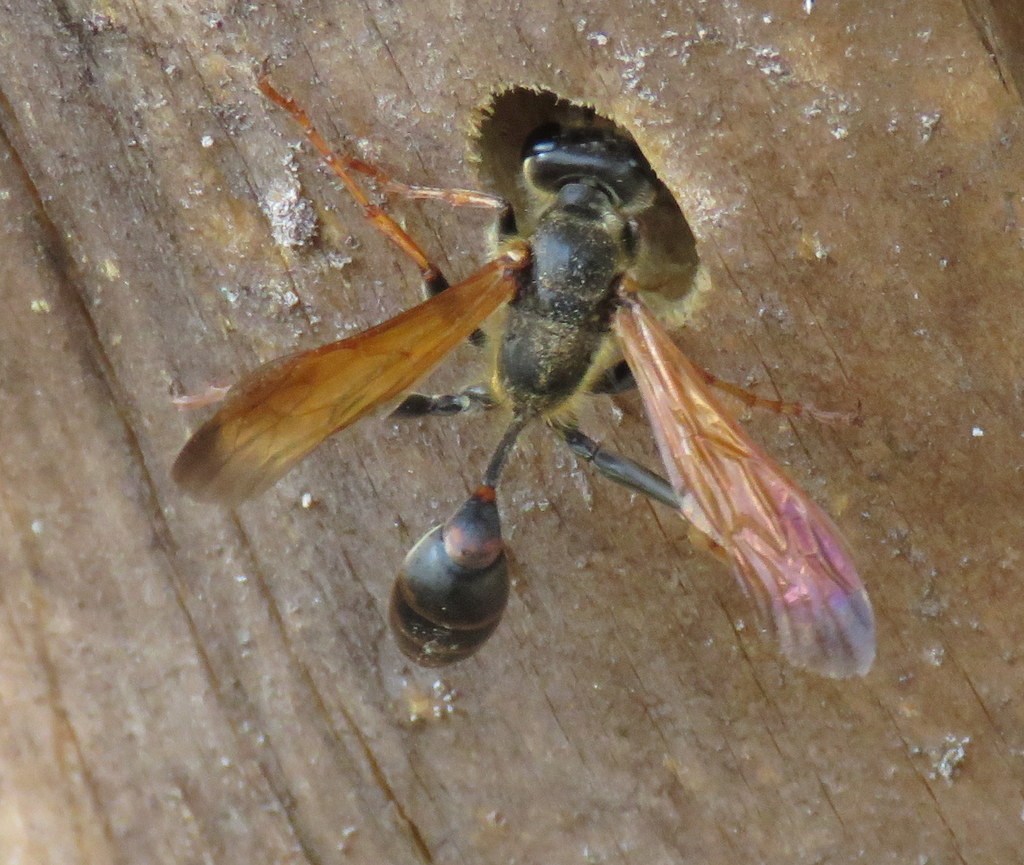 |
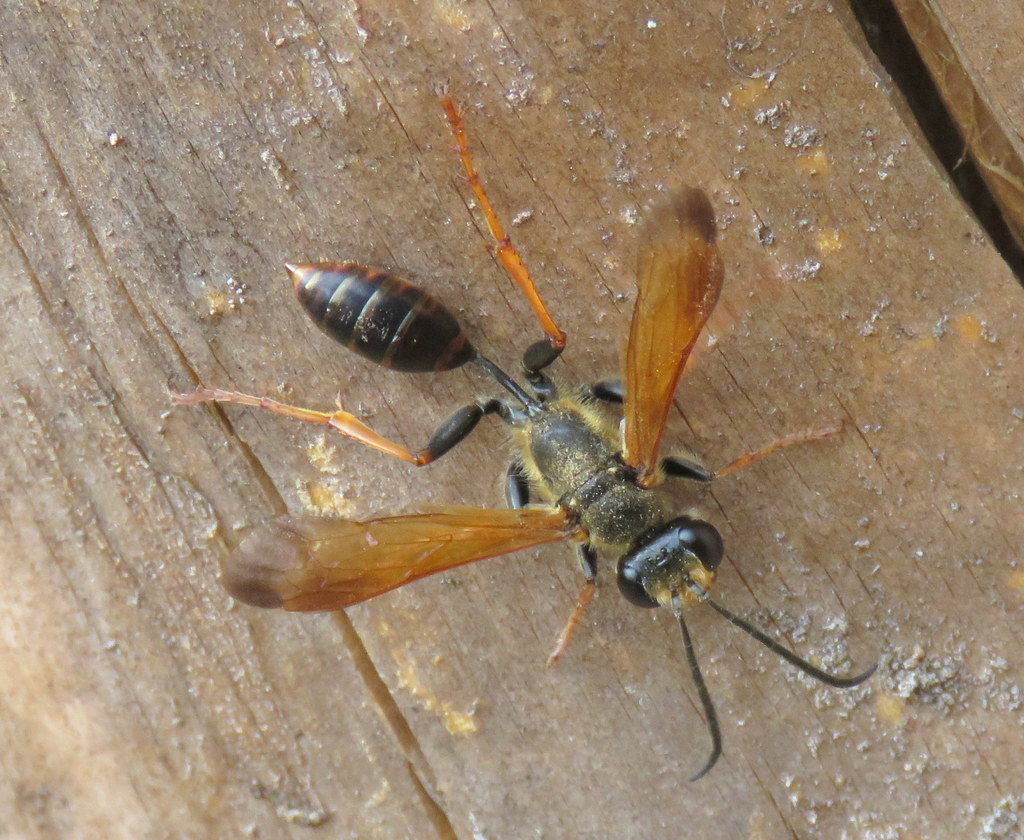 |
 |
Ectemnius cephalotes
Native to Europe. Naturalized in North America.
Prey: flies
Sometimes share a communal entrance
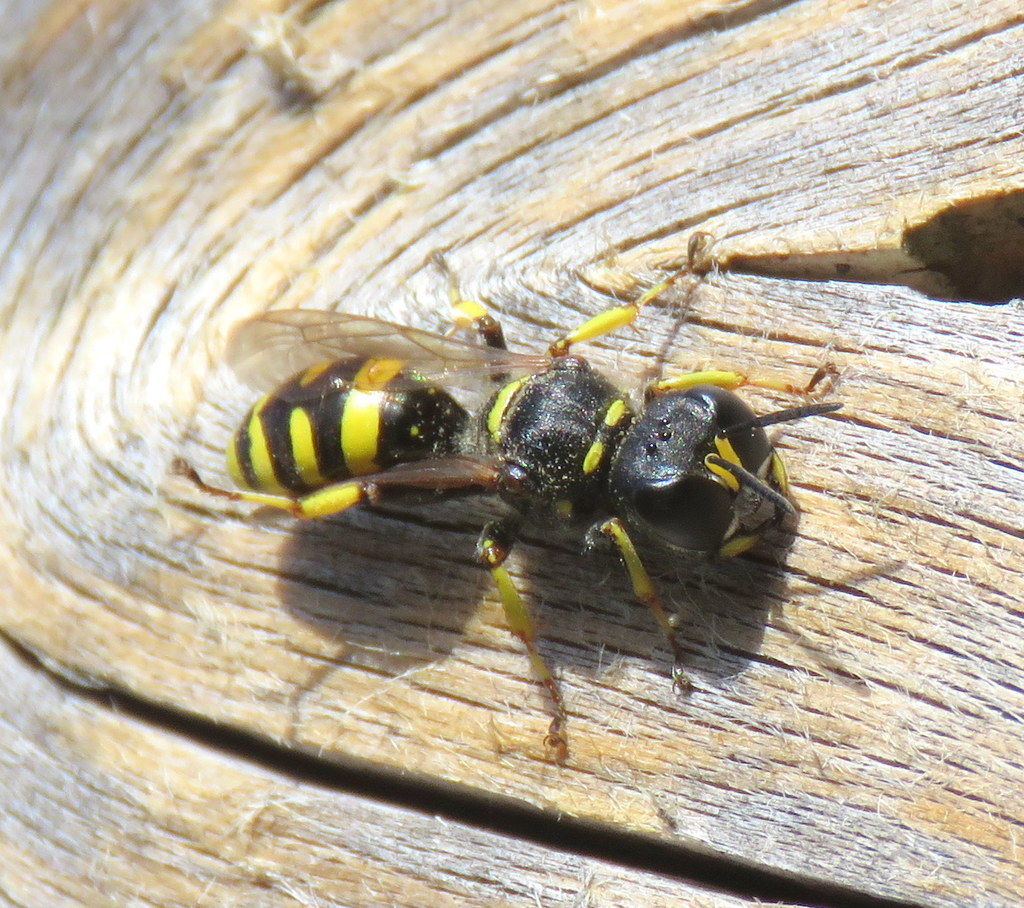
Ectemnius ruficornis
Prey: flies
 |
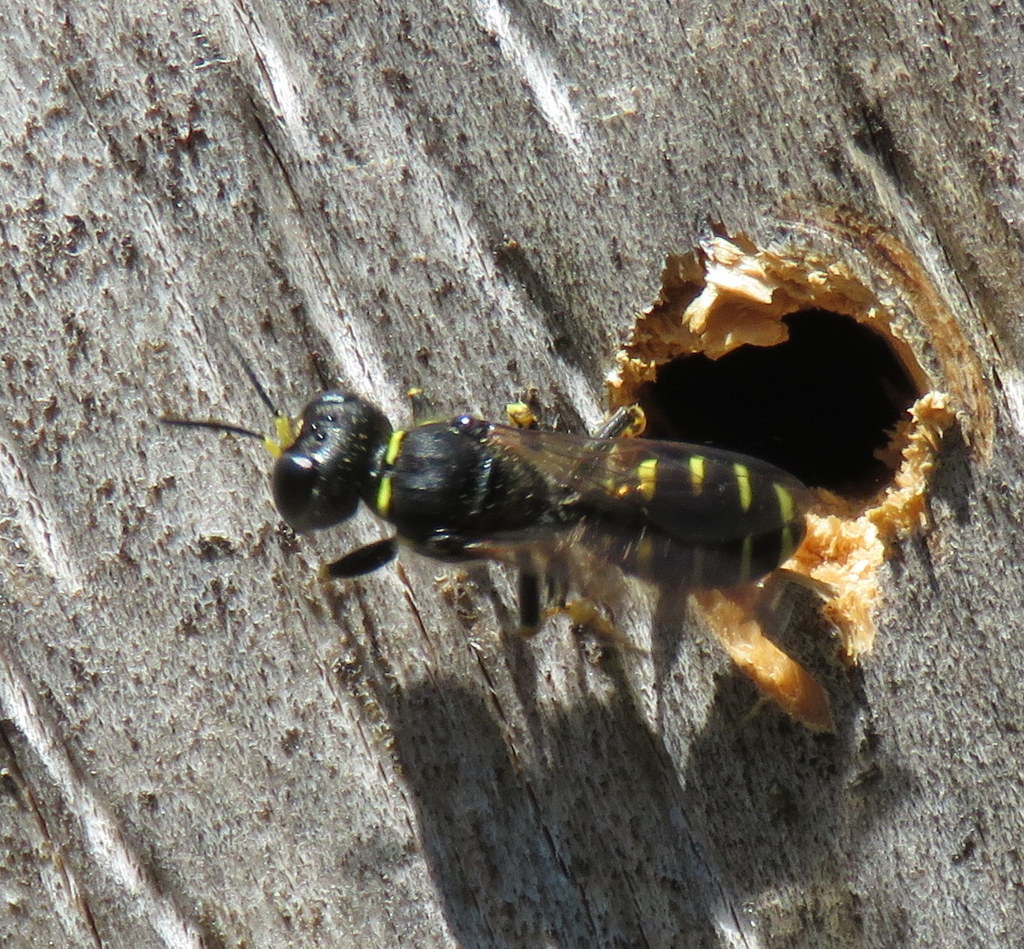 |
Crabro sp.
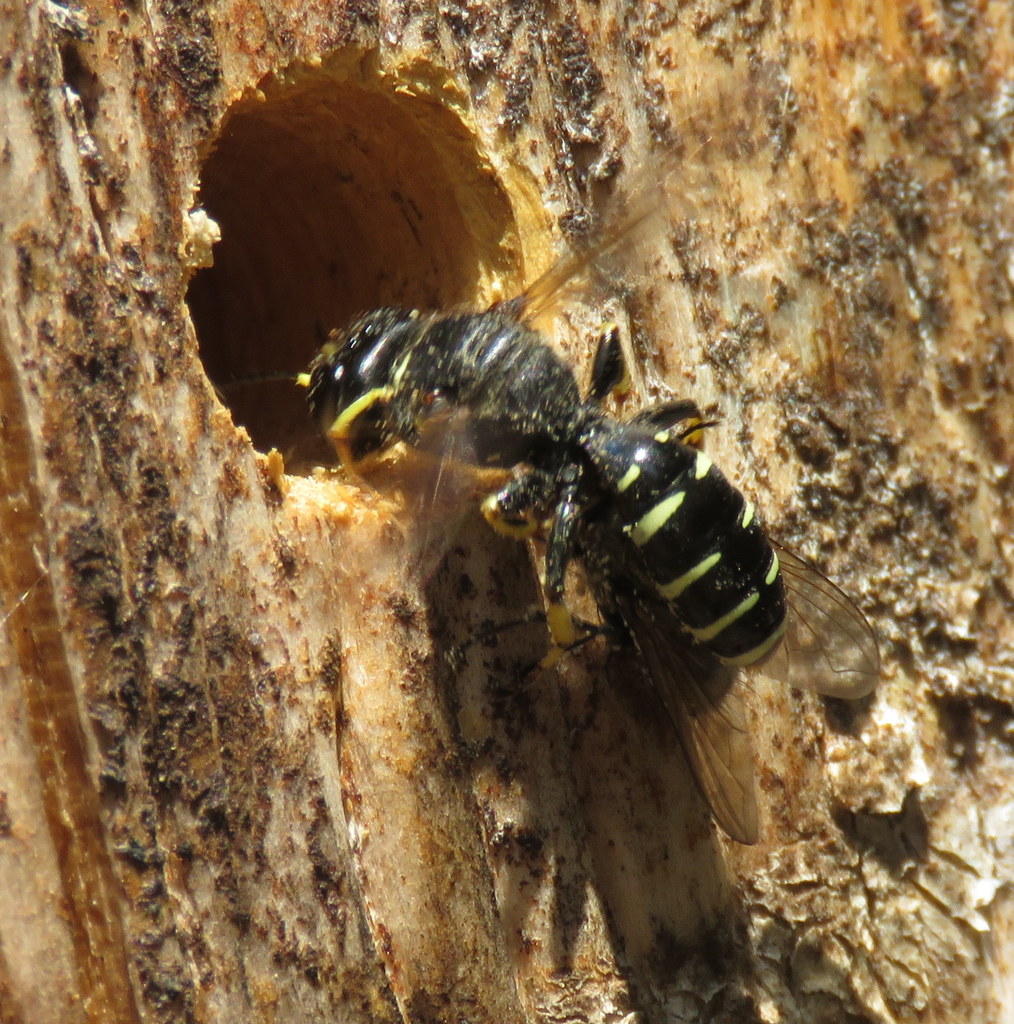
Prey: flies
But I wonder about this one. Crabro are supposed to be ground nesters. So what's it doing on the stump?
Passaloecus sp.
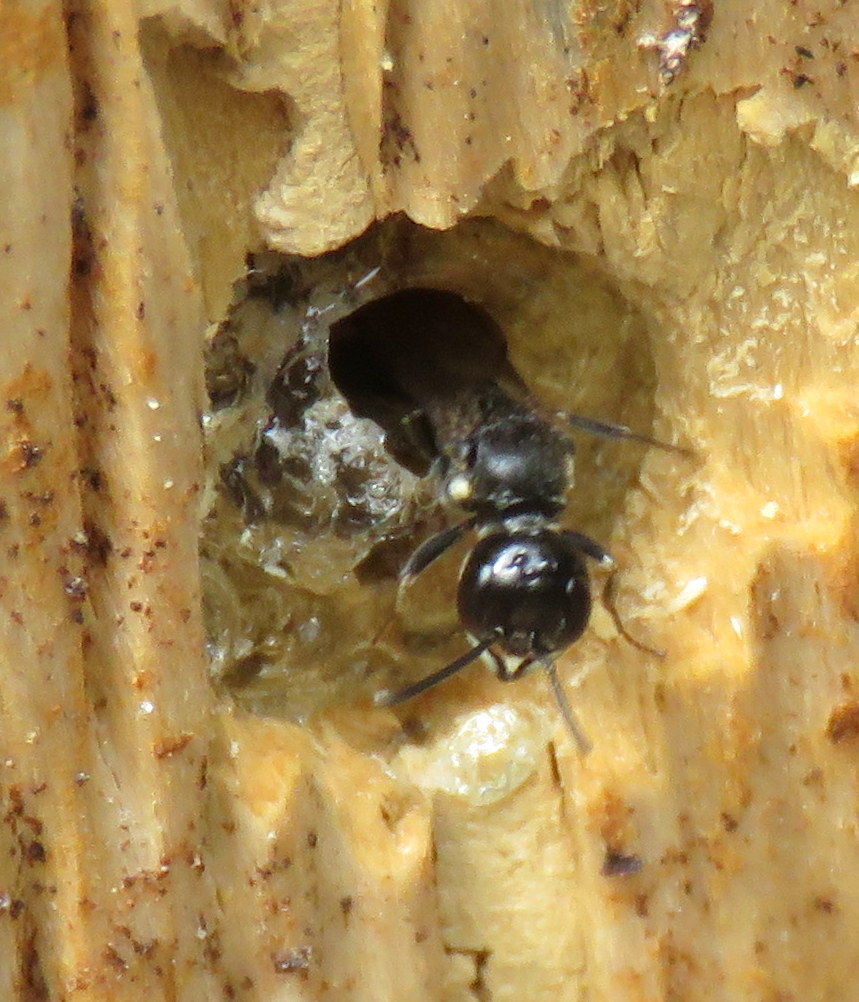
Prey: aphids. Use pre-existing holes and pine resin for nest partitions. Females feed on honeydew.
Nest Parasites
Chrysura sp.
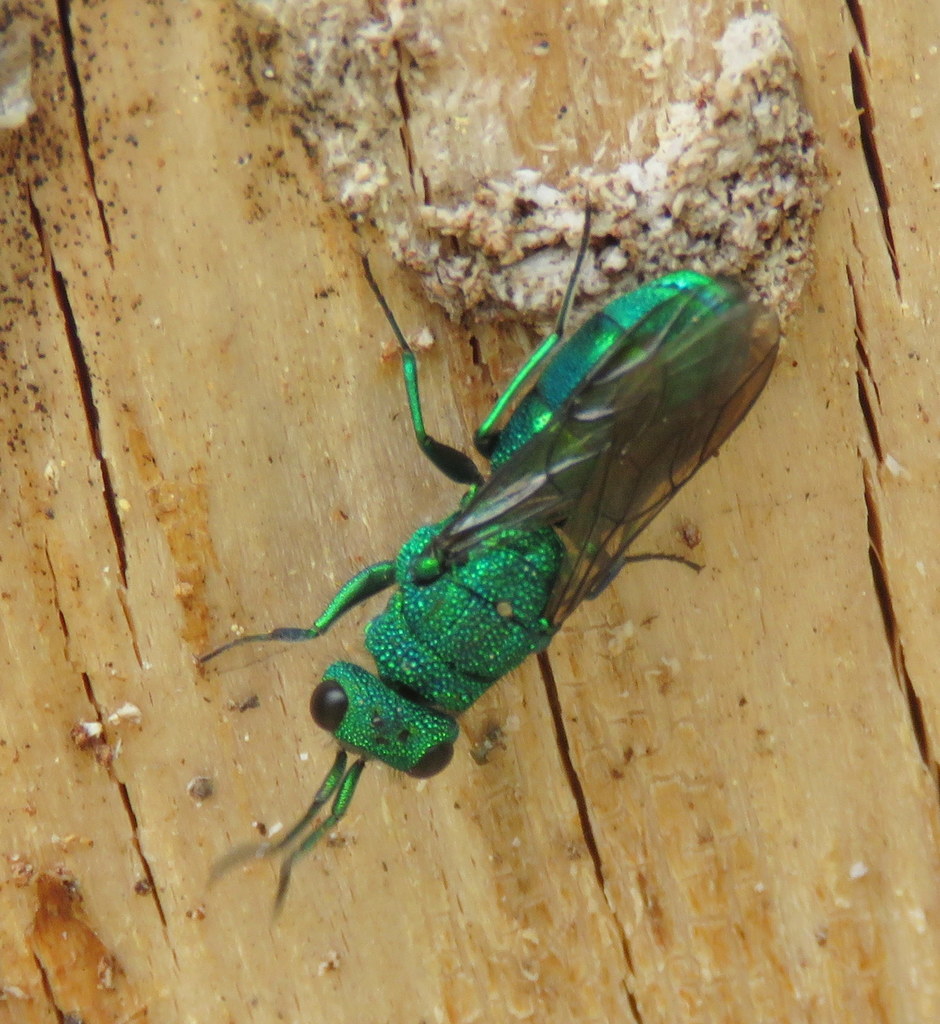
Parasitize Melachilid bees, mostly Osmia. The female waits until the host mother leaves the nest, then she enters, lays an egg (before the host has laid one) on a cell that is being provisioned. After hatching, the Chrysura larva waits until the host larva has pupates and then eats it.
Subgenus Cyrtocoelioxys
Subgenus of Coelioxys (Melachilidae)
Coelioxys is Greek for "sharp belly", which refers to the pointy abdomen of the bees in the genus.
Nest parasites of bees in the Megachile genus. The females use their pointy abdomens to break through the leafy walls of leaf-cutter nests. They lay an egg, which after hatching (which is almost immediately) use their big mandibles to chop up the host egg.
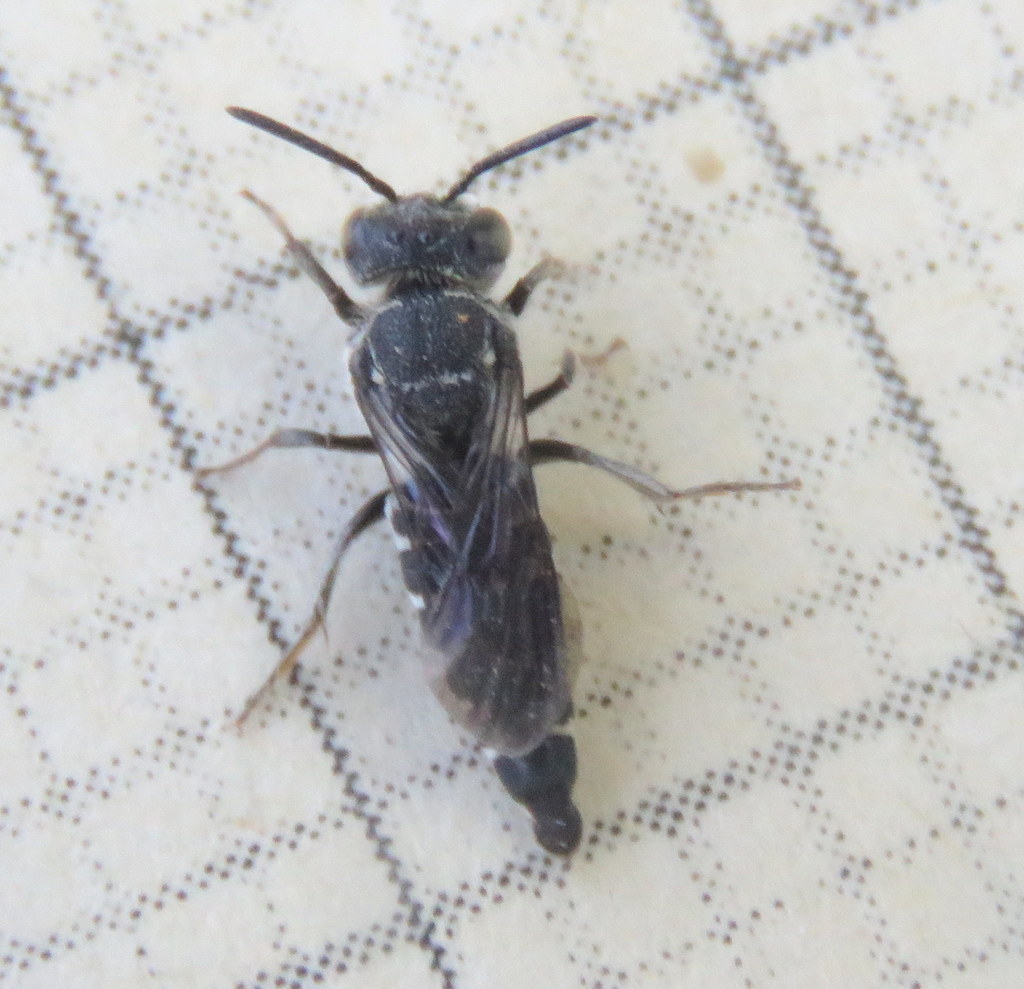
Sapyga sp.(Club-horned cuckoo wasps)
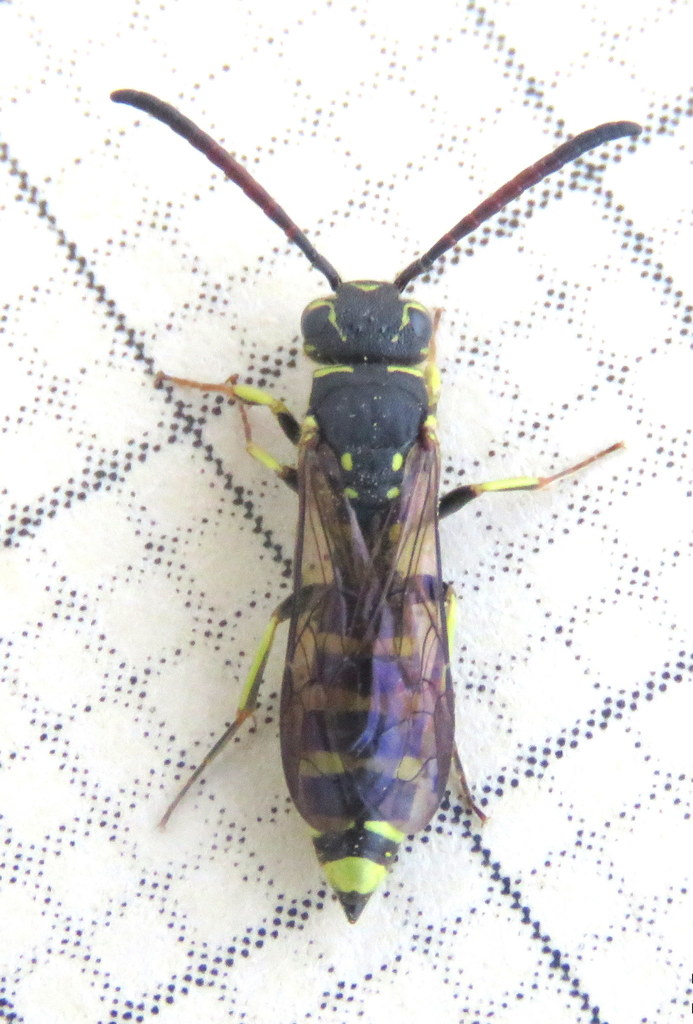
Cleptoparasites of bees. Females oviposit in bee nests in spring. When eggs hatch, they eat the host egg, and the pollen and nectar that was provided it. After completing its development, the larva spins a silk coccoon in which to pupate. Adults emerge and spend the winter in the nest, ready to begin again the next spring.
Parasitoids
Xorides sp.
Idiobiont ectoparasitoids of wood-boring beetles. Females use their antennae to locate beetle larvae and then, when they find them, use their long ovipositor to deposit an egg on or near the beetle larvae. The process takes a half hour or so.
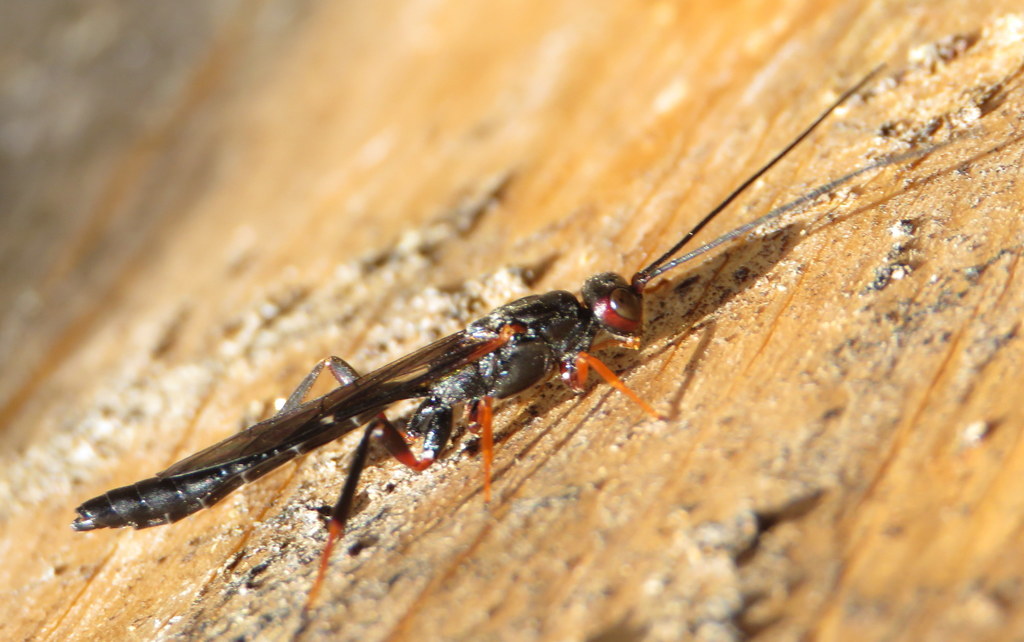 Male |
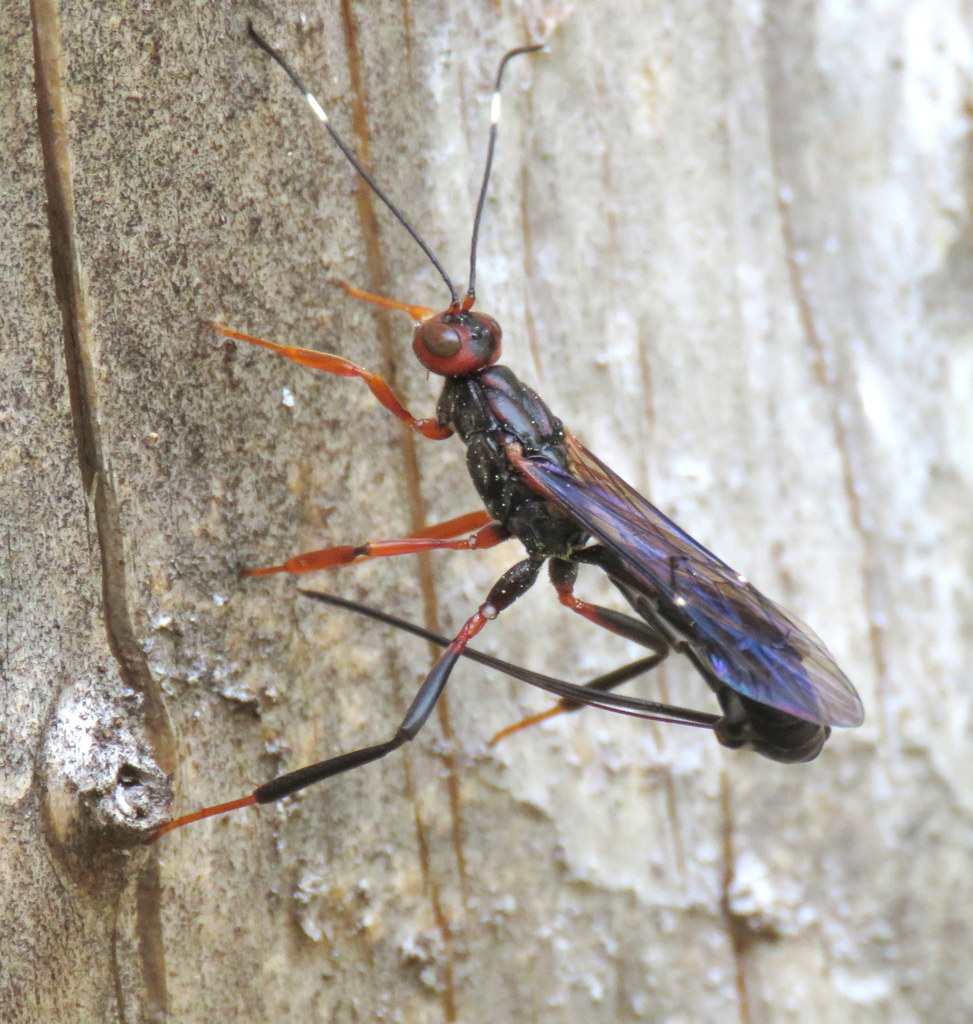 Female |
Gelis sp.
Flightless ant-mimicking Ichneumonid
Spider parasitoid?
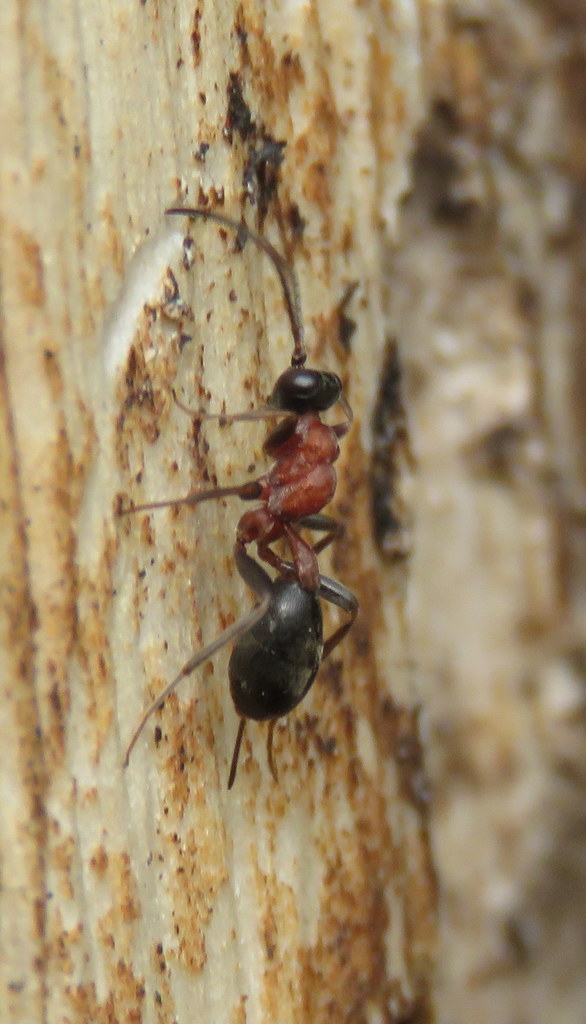
Bug Tracks: Spider parasitoids
Survival of the fittest: Predator wasps breed at the expense of spider juveniles
Multi-trait mimicry of ants by a parasitoid wasp
Parasite of the day: Gelis agilis
Orussus sp.
Parasitic Wood Wasp
Orussidae were the first non-herbivorous hymenoptera. They are rather rare and are seldom photographed. Ectoparasistioids of wood-boring beetles (usually Burprestidae) . Like Xorides, they locate prey by echolocation.
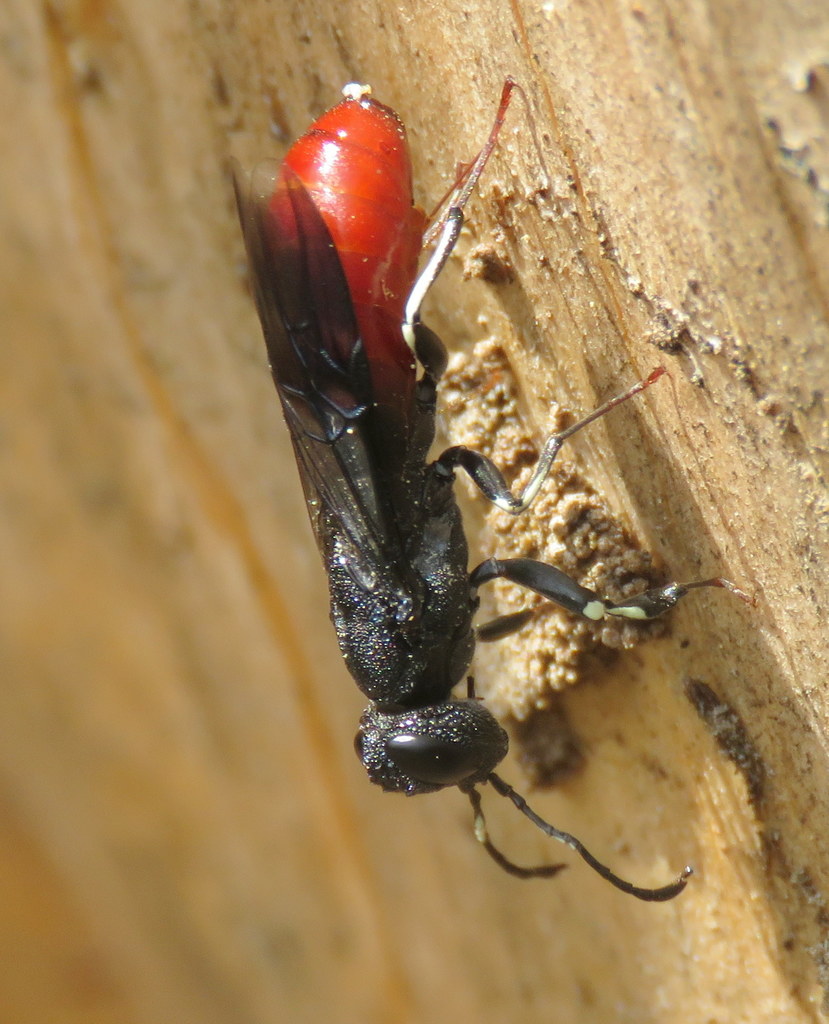 Female |
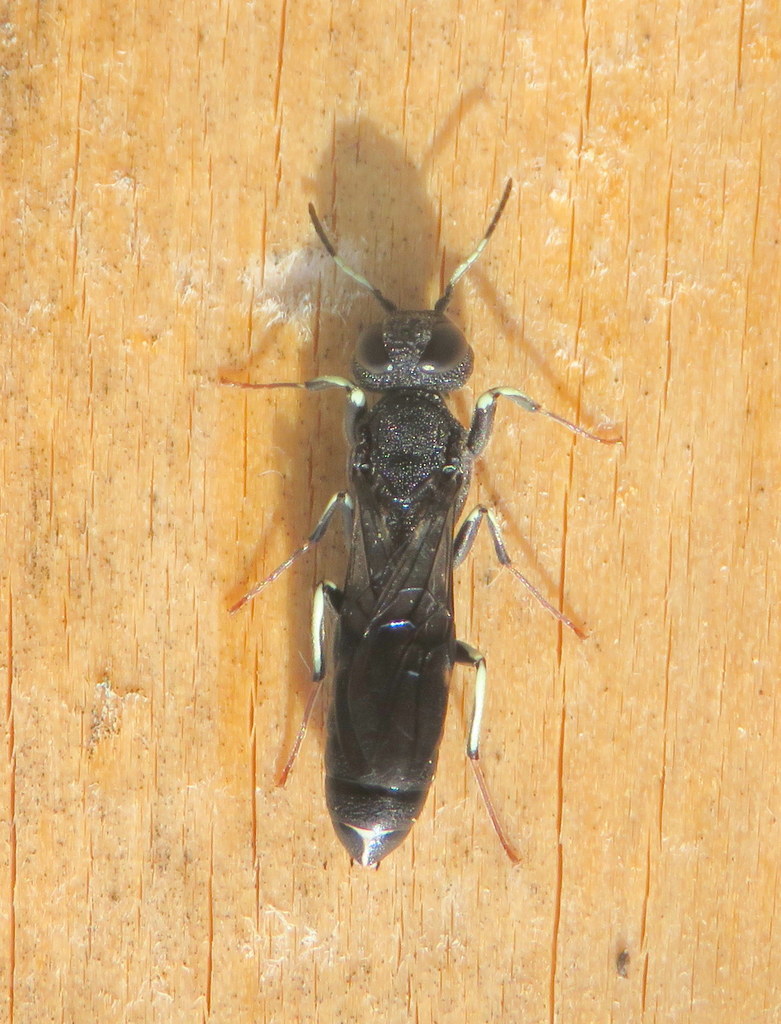 Male |
Orussus terminalis: Wasp Wednesday
Gasteruption sp.
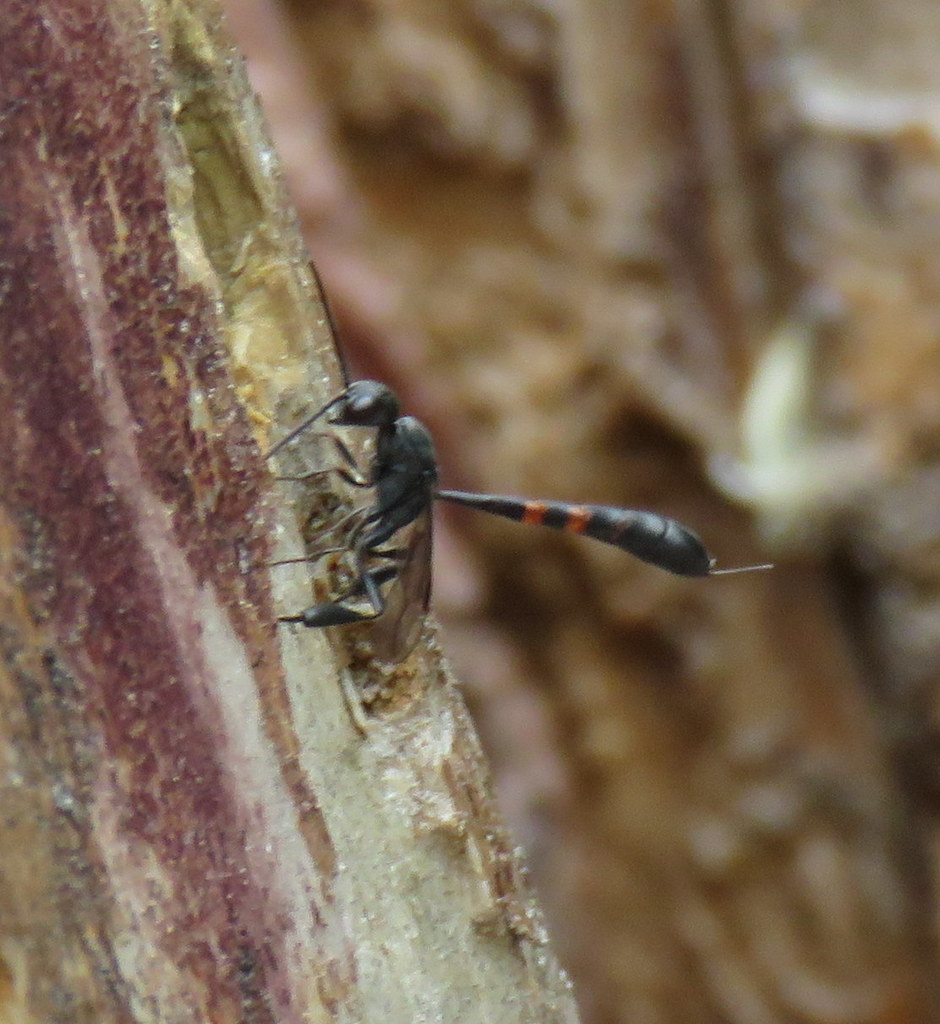
Leucospis affinis
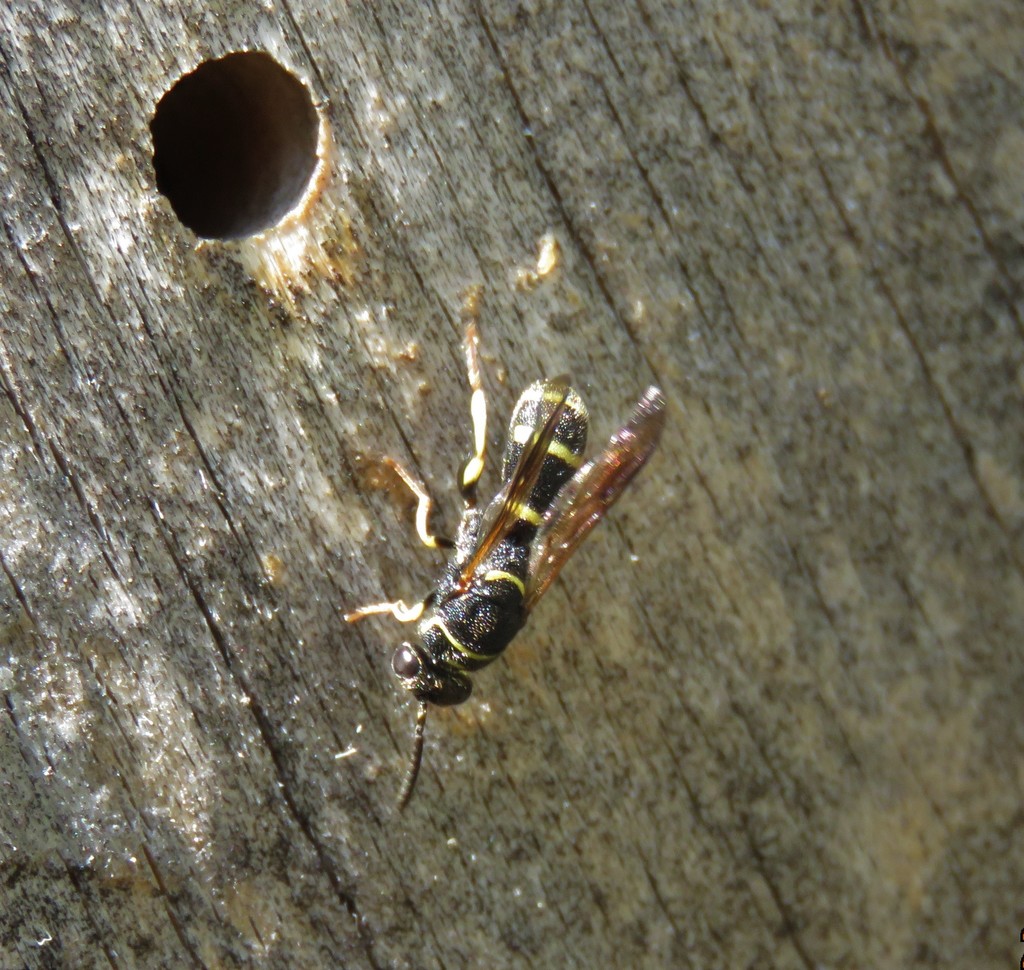
Beetles
Bark-gnawing Beetle (Temnoscheila sp.)
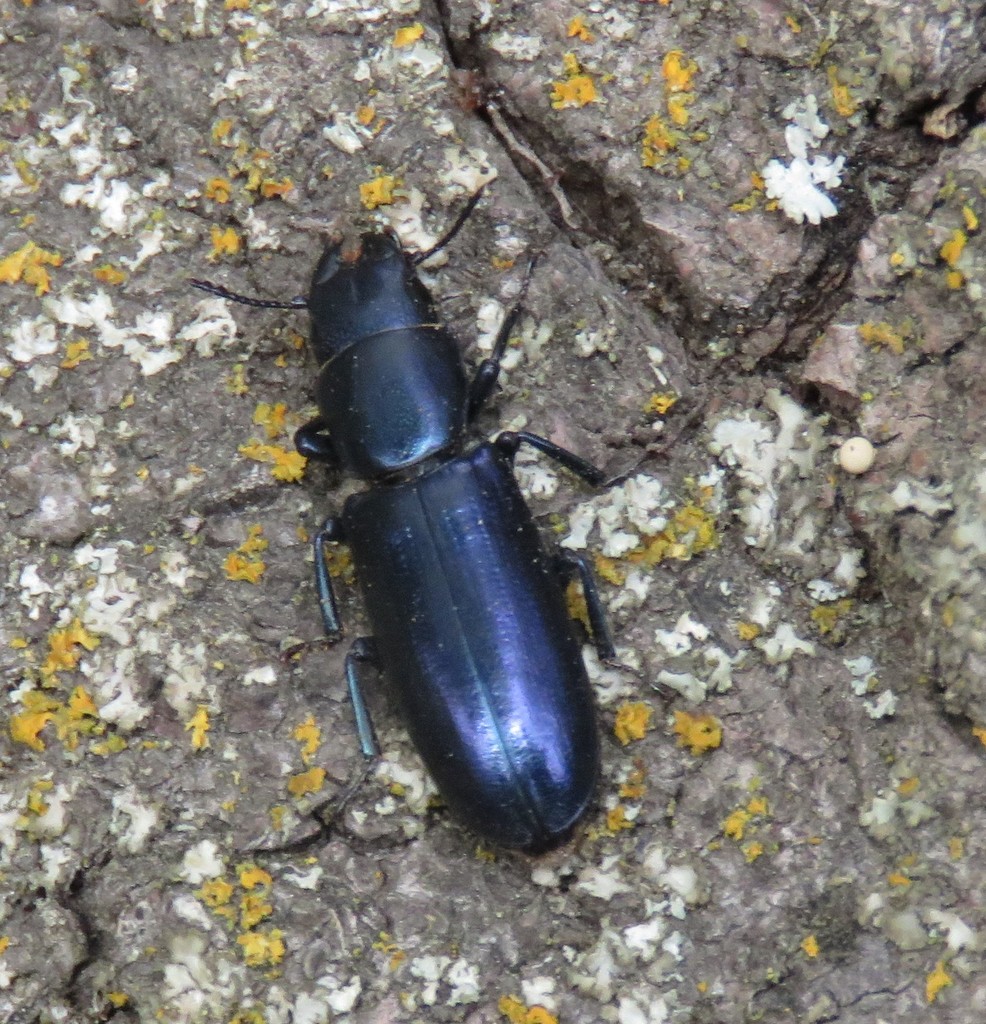
Western Eyed Click Beetle (Alaus melanops)
Larvae are predators in dead wood.
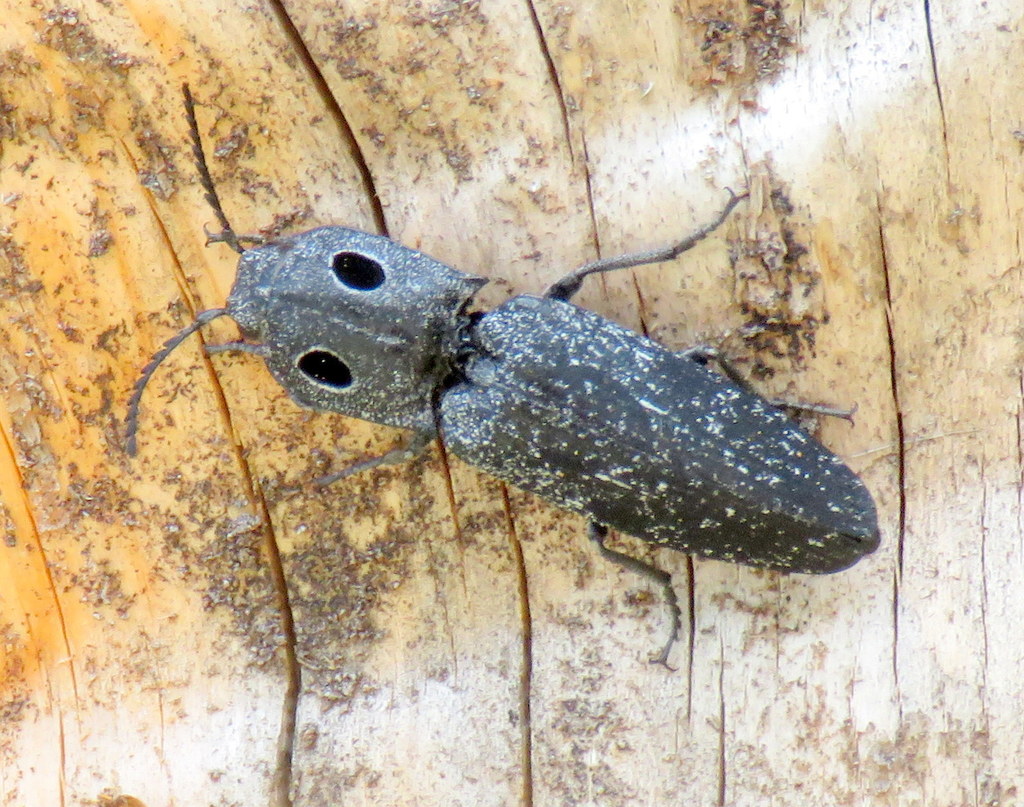
Lacon sp.

Western Sculptured Pine Borer (Chalcophora angulicollis)
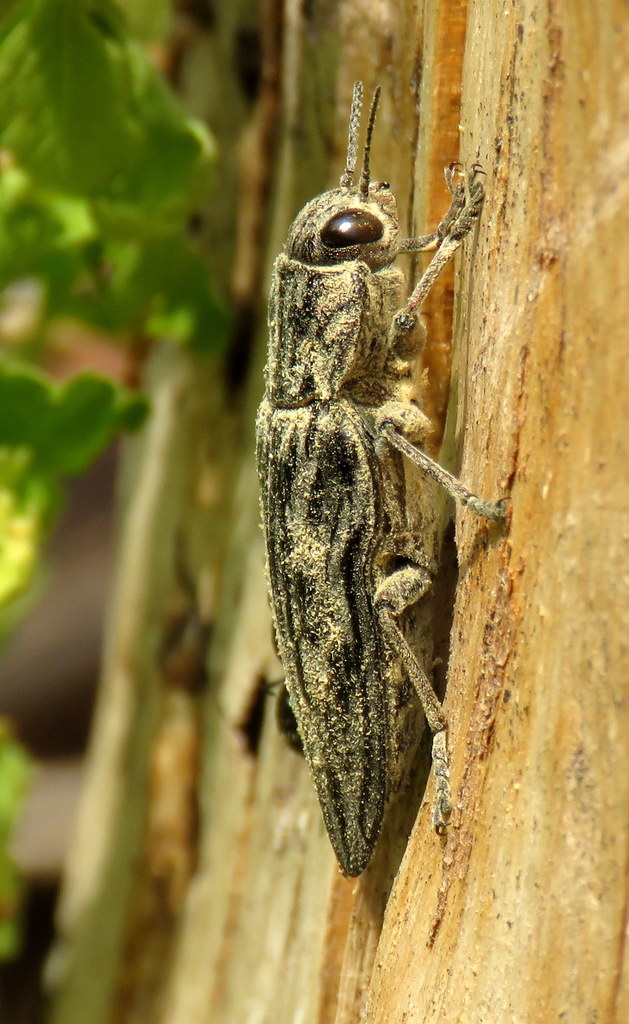
Social Wasps
Bald-faced Hornet (Dolichovespula maculata)

European Paper Wasp (Polistes dominula)
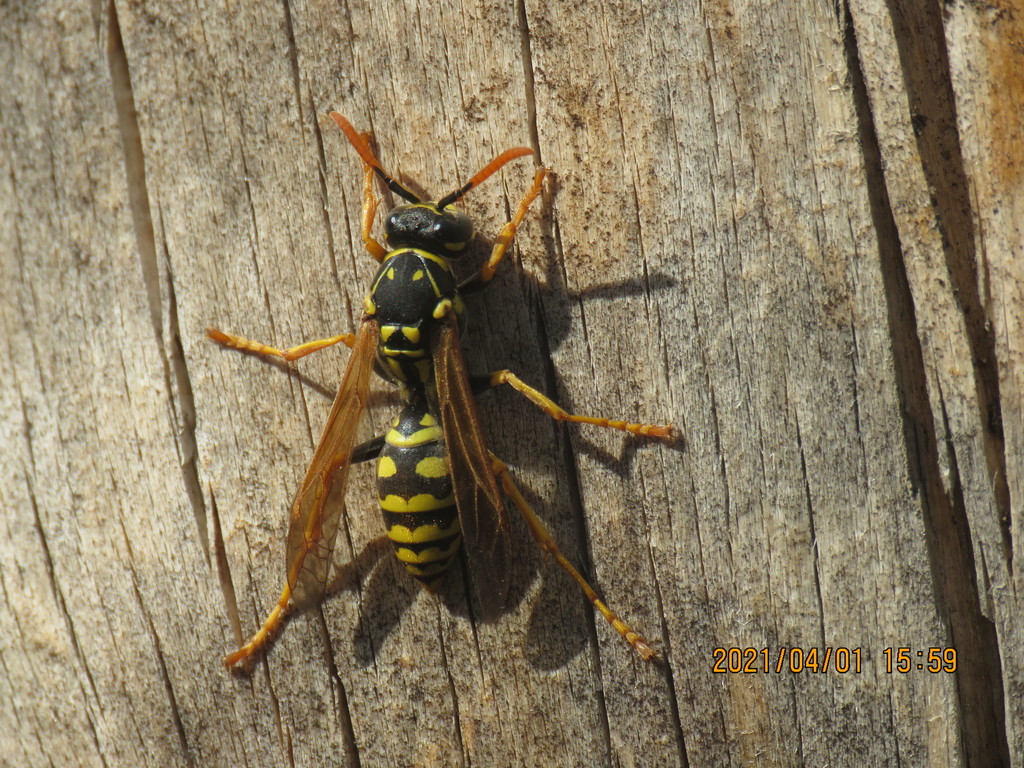
Flies
Black Blow Fly (Phormia regina)
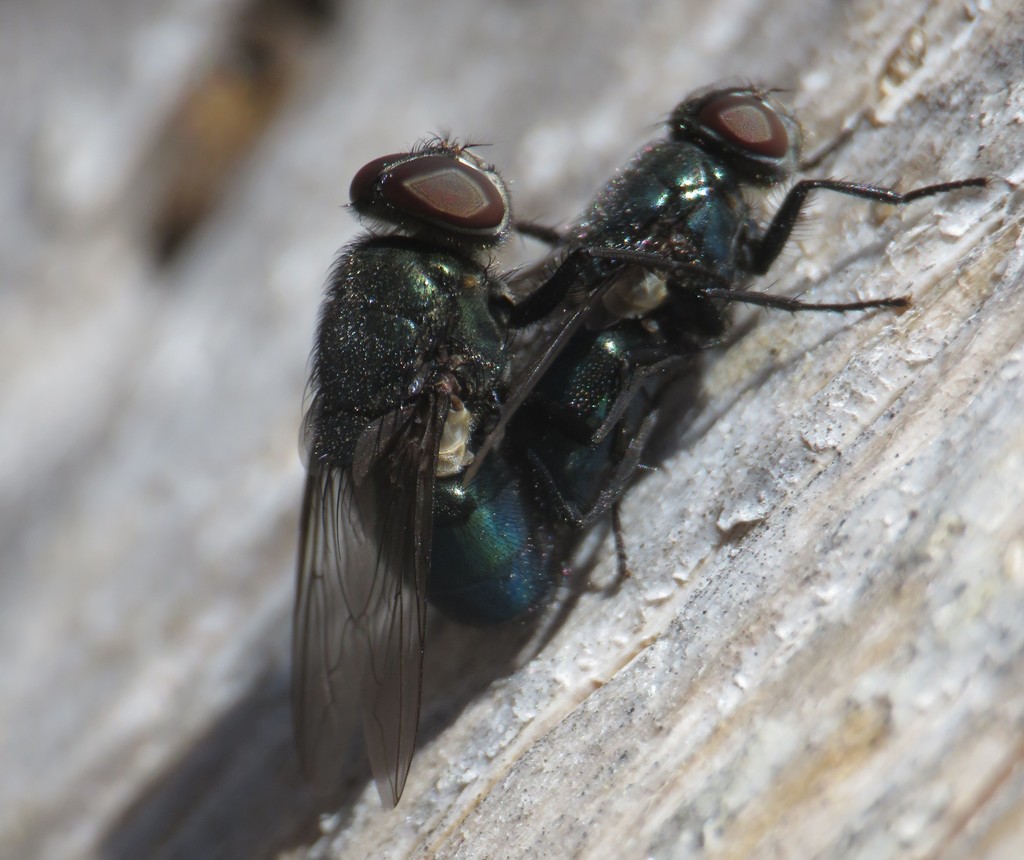
Ants
Western Carpenter Ant (Camponotus modoc)
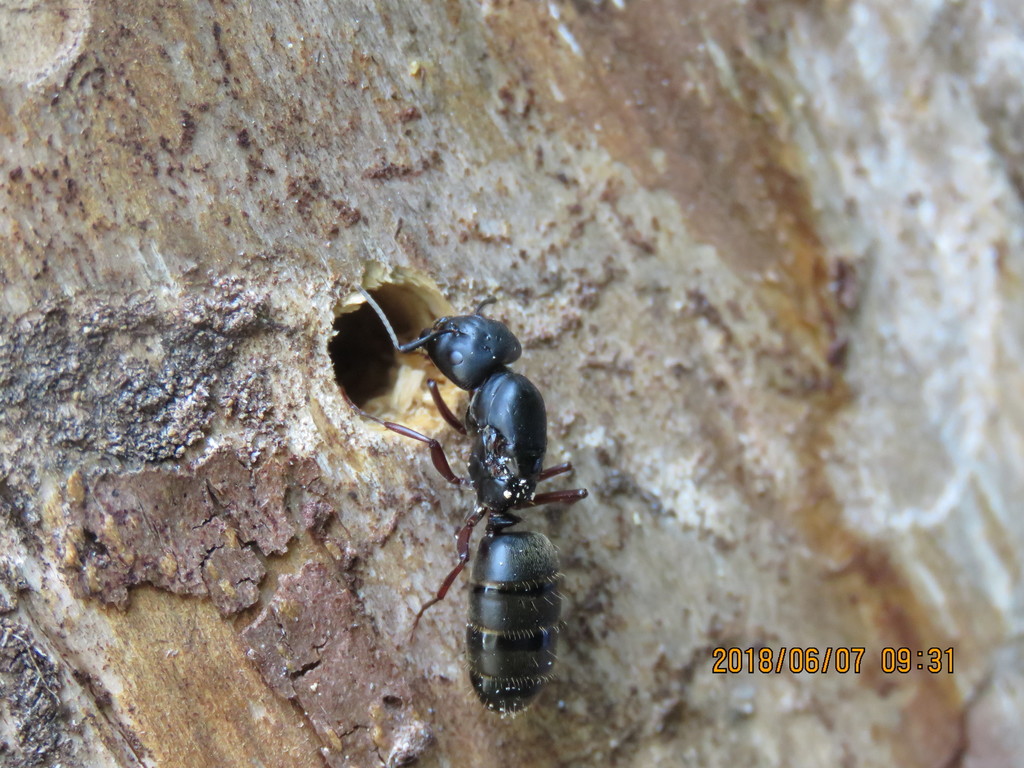
Spiders
Zebra Jumper (Salticus scenicus)
